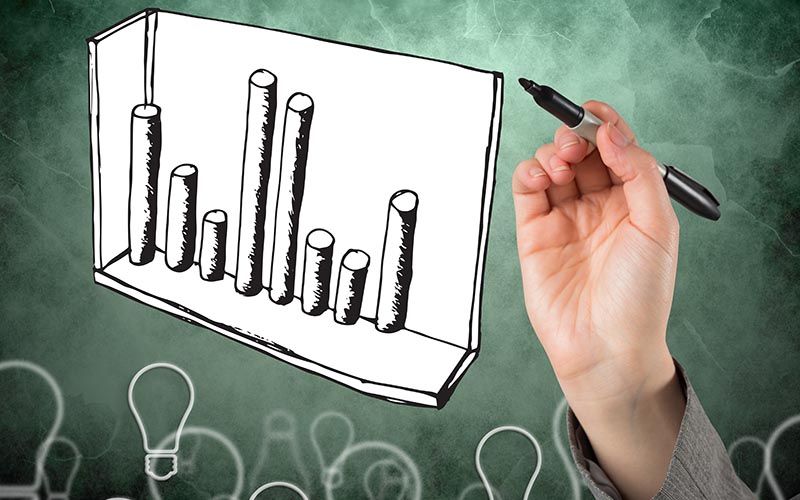“Success is nothing more than a few simple disciplines, practiced every day.” – Jim Rohn
What Is A Chart of Accounts?
A chart is a map. A chart is also a document that provides information. This is relevant because a Chart of Accounts (COA) is like a map of a company’s finances, which happens to be on a document that lists all its accounts in the general ledger, including the balance sheet and income statement.
Its simple format enables investors and shareholders to see the company’s financial status at a glance. All you need is the identification code to find the account you’re looking for.
One of the biggest benefits of a COA is that it can be customized to suit all businesses, regardless of size.
How Does A Chart of Accounts Work
COAs are a godsend to companies that need to organize their finances succinctly. This is because a COA enables you to separate expenditure, revenue, assets, and liabilities for a bird’s eye view of your company’s finances. A bonus benefit is that a COA ensures your financial statements comply with reporting standards.
Because they can be customized, there is no ‘right’ format. While they tend to have the same basic structure, the final look depends entirely on the business concerned.
The Structure Of The Chart Of Accounts
A COA’s basic structure follows financial statements; balance sheets first and then income statements.
Primary accounts of assets, liabilities, shareholders’ equity, revenue, and expenses are divided into subsets, including operating revenue, operating expenses, non-operating expenses, and non-operating losses.
You can drill down into sub-accounts for business functions and company divisions.
Below is an example of a small company’s COA with the primary assets, liabilities, and equity accounts divided into sub-accounts.
- Assets
-
- Cash
- Savings account
- Petty cash balance
- Accounts receivable
- Undeposited funds
- Inventory assets
- Prepaid insurance
- Vehicles
- Buildings
- Liabilities
-
- Company credit card
- Accrued liabilities
- Accounts payable
- Payroll liabilities
- Notes payable
- Shareholders’ equity
-
- Common stock
- Preferred stock
- Retained earnings
| Account | Category | Sub-account | Account number |
|---|---|---|---|
| Balance sheet | Assets | Accounts receivable | 1001 |
| Cash | 1002 | ||
| Inventory | 1003 | ||
| Fixed Assets | 1004 | ||
| Liabilities | Accounts payable | 1005 | |
| Wages payable | 1006 | ||
| Shareholders’ equity | Common stock | 1007 | |
| Retained earnings | 1008 | ||
| Income statement | Revenue | Operating revenue | 2001 |
| Non-operating revenue | 2002 | ||
| Expenses | Operating expenses | 2003 | |
| Non-operating expenses | 2004 |
The Evolution Of The Chart Of Accounts
COAs evolve with new accounting practices, regulatory requirements, and technology. This is most evident in data capture, organization, and reporting.
Consider the transition from manual processes to cloud-based accounting software. Manual documents are limiting and inflexible. Human error is a serious risk.
Accounting software and enterprise resource planning (ERP) systems have minimized risk and revolutionized accounting practices, including the COAs, which are now dynamic and customizable to suit individual organizations.
Key Elements Of A Modern Chart Of Accounts
Let’s look at the key elements COAs need so they can meet businesses’ financial management needs.
Integration with Accounting Software
Modern COAs integrate seamlessly with existing accounting software systems to ensure:
- Efficient data entry
- Automated processes
- Accurate financial reports
- Efficient data management and reporting
Flexibility and Customization
New, flexible systems enable businesses to use COAs as customization tools so they can tailor their financial reports to meet their specific needs, including:
- Adding, modifying, or deleting accounts
- Creating hierarchies and groups in line with their unique financial structure
Alignment with Accounting Standards
Modern COAs ensure compliance with GAAP and IRRS accounting standards through:
- Accurate financial reporting
- Consistent and transparent financial reporting
Enhanced Reporting Capabilities
Modern COAs provide deeper insights into a business’s financial performance so they can make informed and strategic decisions. Tools that enable the process include:
- Customizable dashboards
- Real-time analytics
- Predictive modeling
- Enhanced reporting
Accessibility and Collaboration
Thanks to cloud-based accounting software, all stakeholders have access to essential financial information whenever and wherever they are. This drives collaboration and communication among finance teams, department heads, and management.
Scalability and Adaptability
Modern COAs are scalable and can be adapted to accommodate financial growth and evolution. This includes acquisitions and business structure.
Benefits Of Modernizing The Chart Of Accounts
Modernizing COAs will bring about a range of benefits, just as modernizing other accounting systems has benefited the industry
Let’s look at five primary benefits.
1) Improved Efficiency
- Streamlined processes
- Automated workflows
- Integrated systems
- Improved efficiency and productivity across the organization.
2) Enhanced Decision-Making
- Access to accurate and timely financial information.
- Enables informed decision-making at all levels of the organization
- Drives business growth and profitability.
3) Better Compliance
- Alignment with accounting standards and regulations
- Ensures compliance with legal and regulatory requirements
- Reduces the risk of penalties and fines
4) Greater Visibility and Transparency
- Provide greater visibility into the organization’s financial performance
- Allows stakeholders to track key metrics and identify trends
- Effective monitoring of financial health.
5) Cost Savings
- Optimizing processes reducing manual errors
- Improving resource allocation
- Significant cost savings for the organization
Conclusion
Accounting organizations that don’t evolve to keep up with rapid developments in the business environment will fade into the background.
To stay ahead of the curve businesses must embrace:
- Flexibility
- Integration
- Compliance
- Collaboration
- Innovation
It’s by modernizing accounting systems, including COAs, that organizations can remain relevant and competitive in the marketplace.
Watch a video from Sage on Charts Of Accounts called: Sage Business Cloud Accounting Start – Chart of Accounts.
Need more assistance? Watch this video from Sage called: How To Create The Chart Of Accounts In Sage Accounting 100 The Accounting Plan.
Need professional help with your chart of accounts? Contact Lescault and Walderman to learn more about our outsourced accounting services.
Stay in the loop






